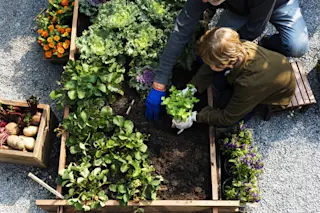After months of work, your quarantine garden might finally be paying off … for insects. Or even worse, no one gets to eat the fruits of your labor because a fungus got to the plants first. The situation might send you researching pesticides — a daunting task, given the range of options (and opinions) on how to best deter pests.
"Whenever I talk to gardeners, it’s either, 'I want something that will kill these bugs and do it right now and I want to hear them scream as they die,' or it’s somebody that says, 'I want to get rid of the bugs, but I just want to shoo them away and I don’t want to use any chemicals,' " says Mike Merchant, an entomologist with Texas A&M University. "The answer really depends on the gardener."
If you’re unsure which category you fall into, or just want to better understand ...














